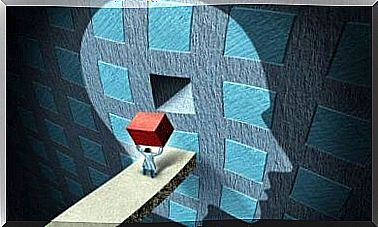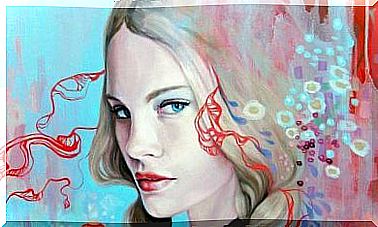Freud, The Series: What Is True And What Is Not In The New Netflix Fiction

Sigmund Freud continues to raise spirits since he left. He’s in an argument at the bar, in college, and now as a fictional figure. And it is that the new Netflix series does not clarify much about the life and work of this Austrian neurologist. Rather, it contributes to further confusion.
There is very little historical, biographical and academic data that are accurately reflected in the series, since it is a historical fiction. In fact, the series imagines how Freud could have used his budding psychoanalytic skills to solve crimes.
Marvin Kren, director of the series, has stated that he did not want it to seem too historical, but that young and modern audiences were drawn to it. Said and done.
The series is a mix of modern, provocative and historical elements. Now why mix the father of psychoanalysis with crimes and séances? Wasn’t there already enough controversy and confusion about her figure?
Apparently not, since this interest in making him a character mixed with fiction is not recent. In this article, we tell you about Freud’s previous “cinematic and artistic forays” and clarify what is true in recent Netflix fiction.
The great cinematic interest behind Freud
Currently, Freud’s work is studied more in humanities than science departments. Its popularity is not precisely thanks to its scientific rigor. However, Freud had the advantage of being an extremely good writer who illustrated psychoanalysis with reference to the work of great artists, such as Shakespeare, Dostoyevsky, and Leonardo da Vinci.
His work and theoretical assumptions reach the general public with interest, largely thanks to art and film. “You don’t have to read Freud to live in a world where Freud is important or to think in a Freudian way , “ says Stefan Marianski of the Freud House Museum in London.
On the other hand, Nicholas Ray, a professor at the University of Leeds, affirms that in the field of popular culture his work has been processed to soften it and turn it into a cozy and reassuring fantasy.
It is notable in the case of practically the entire work of Woody Allen or in the father-son dynamic in The Empire Strikes Back or Back to the Future. There are also the novels by Virginia Woolf and James Joyce. Salvador Dalí and the surrealists. The Sopranos and Frasier and more specifically the 2011 film A Dangerous Method with Viggo Mortensen.
Previous attempts to do a detective series with Freud
A 2006 novel, The Murder Interpretation (Jed Rubenfeld), explored Freud solving a murder case. It was based on the first and last visit of the father of psychoanalysis to New York in 1909.
Then in 2014, X-Files director Frank Spotnitz was ready to write Freud: The Secret Casebook in which he intended to use his theories to solve unsolved cases. However, the series never materialized.
Freud, the series: what is true and what is not
Freud was born in Freiberg (a city now called Pribor in the Czech Republic). His family moved to Leipzig and then settled permanently in Vienna.
There is very little data that can be clearly extracted from this series. Below, we have rescued some of them.
Dates of your medical studies
He studied medicine at the University of Vienna and worked at the city hospital. It was in 1881 that he graduated from this university as a doctor. Later, in 1885, he completed his habilitation and began his career in neuropathology as a university professor.
The series takes place in 1886, so it seems to agree with his incipient theory and review of the first cases in reality.
Cocaine addiction
Freud began trying cocaine in his youth, he believed it to be a miracle drug. In 1884, he wrote an article entitled Über coca , a kind of praise for this substance, as he was surprised by its physical and psychological effects. Only later did he discover the addiction caused by this drug.
The eight-part Netflix series explores this cocaine addiction in a good way.
Early psychoanalytic practice with Breuer
In 1886, he entered private practice in Vienna and began using hypnosis in his work, which at the time was an unpopular approach.
Interestingly, the series explores this part of his life. In reality, he took the approach of his friend, Josef Breuer, with whom he collaborated to write Studies on Hysteria .
In his works, the experiences of Breuer in the treatment of his patient Anna O, who was diagnosed with hysteria, stand out. Due to inconsistencies in the results, Freud eventually abandoned the technique of hypnosis and later developed what he called “free association.” All this relationship with his mentor is not fully clarified in the series.

Romance with Fleur Salomé
Another aspect of the show that seems based on real life is the character of Fleur Salomé, a medium who joins the plot to help solve cases. The character appears to be based on Lou Andreas-Salomé.
There have always been rumors that the real Freud and Lou Andreas-Salomé experienced feelings for each other, but it has not been proven. The series takes place in the 1880s and it is believed that they did not meet until 1911.
Murder detective
Sigmund Freud was never in charge of any criminal investigation nor did he help solve crimes of any kind. In fiction it is also seen how he goes into dark séances. There is no record of it either.
He was a great reader of detective novels, including those about Sherlock Holmes. This leads us to think that perhaps, although he did not solve crimes in his real life, he may have been flattered by this job.
As we can see, there is very little to rescue from Freudian theories throughout the eight chapters, but perhaps some concepts of these gave rise to the imagination and the construction of such a fiction.









